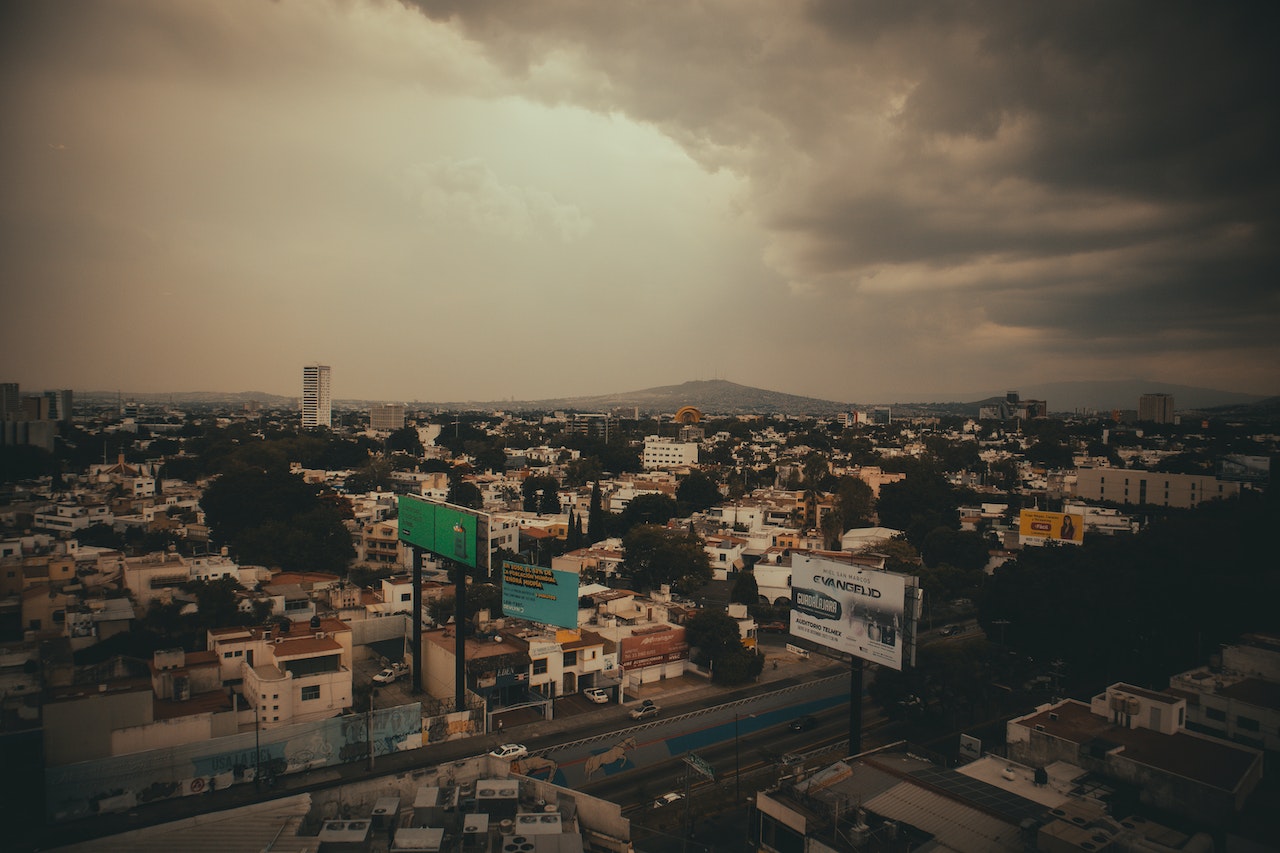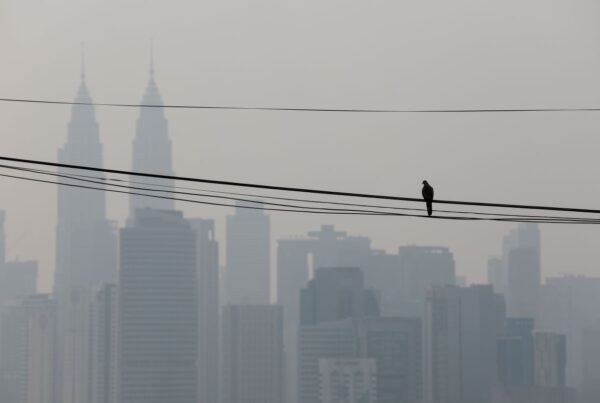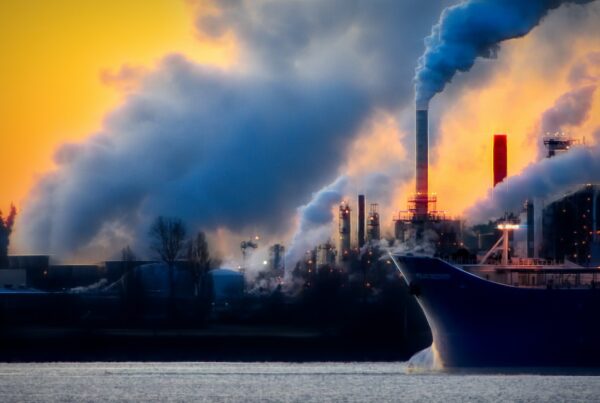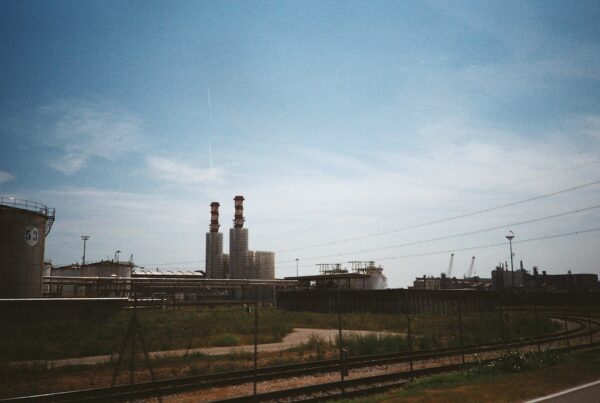Highlights
- Air pollutants concentration during COVID-19 pandemic control strategies in Malaysia was studied.
- Highest reduction of NO2 concentration compared to other air pollutants.
- Decline in air pollutants concentration due to movement control order.
- Highly urbanized city had highest non-carcinogenic risk.
Abstract
Mitigation measures and control strategies relating to novel coronavirus disease 2019 (COVID-19) have been widely applied in many countries in order to reduce the transmission of this pandemic disease. A Movement Control Order (MCO) was implemented in Malaysia starting from the March 18, 2020 as a pandemic control strategy which restricted all movement and daily outdoor activities. To investigate the impact of MCO, air pollutants: particulate matter with an aerodynamic diameter less than 10 μm (PM10), particulate matter with an aerodynamic diameter less than 2.5 μm (PM2.5), sulphur dioxide (SO2), nitrogen dioxide (NO2), ozone (O3) and carbon monoxide (CO) in nine major cities in Malaysia were measured before and during the implementation of the MCO. The non-carcinogenic health risk assessments of the air pollutants are also determined using the United States Environmental Protection Agency (USEPA) Health Risk Assessment method. Overall, NO2 recorded an average percentage reduction of 40% with the highest reduction observed at Kota Kinabalu (62%). The largest reductions of PM10, PM2.5, SO2, O3 and CO were recorded at Kota Kinabalu (17%), Kuantan (9.5%), Alor Star (38%), Kota Bharu (15%), and Ipoh (27%) respectively. All cities had hazard quotient (HQ) values of <1 suggesting no non-carcinogenic health effects. The highest HQ was observed for PM2.5 during the MCO period (4.53E-02) in Kuala Lumpur. An average hazard index (HI) value of 1.44E-01 (before the MCO) and 1.40E-01 (during the MCO) showed higher human health risks before the MCO than during the MCO. This study gives confidence to regulatory bodies that the reduction of human activities significantly reduces air pollution and increases human health and so good air pollution control strategies can provide crucial impacts, especially in reducing air pollution and improving human health.
1. Introduction
Anthropogenic air pollutants are of concern to human health, especially in urban areas where economic activities and rapid industrialization are associated with poor air pollution. Studies on air pollution and human health have been performed in order to explore links between air pollution and human health in terms of toxicity effects (Hanedar et al., 2013), DNA damage (Kalemba-Drozdz, 2015), reduced lung function (Panis et al., 2017), preterm delivery for pregnant women (Sun et al., 2019), mutagenic effects (Feretti et al., 2019), mortality and morbidity (Giallouros et al., 2020; Sarnat et al., 2008) and cardiopulmonary disease (Wang et al., 2018). There are also links between elevated risk of hospital admissions and severe air pollution episodes which indicates the crucial relationship between air pollution and human health.
Significant health affects due to the respiratory disease Coronavirus SARS-CoV-2 (COVID-19) have impacted almost all countries in the world; this epidemic is characterized as a pandemic due to its impact worldwide. COVID-19 was first identified in December 2019 near Wuhan, China. Up to the April 20, 2020, there was a total of 2,314,621 cases of COVID-19 in the world and the risk assessment was characterized as very high (WHO, 2020). The initial cause of this pandemic is Severe Acute Respiratory Syndrome Coronavirus 2 (SARS-CoV-2) which affects the lower respiratory tract and acts in a similar way to pneumonia (Sohrabi et al., 2020). The symptoms of COVID-19 are fever, cough and dyspnoea (Ogen, 2020). COVID-19 was suggested to be spread by direct contact due to touching an infected person or a surface that an infected person has touched and droplets that contain the virus can remain stable for few days (Morawska and Cao, 2020). Due to the highly contagious nature of this virus, strict epidemic and pandemic control strategies have been implemented in China and other infected countries.
In Malaysia, COVID-19 control strategies were implemented and named a movement control order (MCO) starting from the March 18, 2020 with phases 1, 2 and 3 (Nadzir et al., 2020). The MCO in Malaysia prohibits any government and private operations except for several important sectors. No educational activities by universities and schools are allowed, with day care and shopping complexes also being closed. Mass gathering are also prohibited and tourism and recreational activities are restricted. The MCO aims to reduce the transmission of COVID-19 nationally. A study on COVID-19 control measures in China found that the implementation of control measures successfully reduced the eventual epidemic size, suggesting strict monitoring and early detection of COVID-19 cases should remain in place until the end of April 2020 (Yang et al., 2020b). Moreover, the scenario of the lockdown event in China was studied to investigate the influence of emissions reduction due to reduced anthropogenic activities. A decrease in PM2.5 was observed of between 5.35 and 30.79 μg m−3 (Wang et al., 2020).
Previous studies critically investigated lockdown effects toward concentrations of air pollutants (Abdullah et al., 2020; Nakada and Urban, 2020; Tanzer-Gruener et al., 2020; Tobías et al., 2020; Venter et al., 2021; Yuan et al., 2021); air pollution relationship with COVID-19 cases (Accarino et al., 2021; Tello-Leal and Macías-Hernández, 2020); meteorology and air pollutants changes (Hossain et al., 2021; Sulaymon et al., 2021); traffic and mobility changes (Aloi et al., 2020); and the application of statistical and modelling (Bao and Zhang, 2020; He et al., 2020; Liu et al., 2020b) while this study focuses mainly on air pollutants effects in cities with the analysis related to population exposure to non-carcinogenic risks. The COVID-19 pandemic affected human activities, primarily when the MCO was implemented to reduce the chain of infection among the population in Malaysia. Thus, the aim of this study is to investigate the potential changes in concentrations of air pollutants caused by MCO in nine major cities in Malaysia, which had different types of economic activities and number of populations. Differences in air pollutant concentrations before and during the MCO period were evaluated in order to understand the impact of changes in emission on air pollution and human health, in particular on inhalation of non-carcinogenic pollutants for the city population. As the research related to the impact of reduced outdoor activities and COVID-19 pandemic mitigation measures in major cities in Malaysia have not been studied to present, therefore, this study may provide some background reference to the concentration of air pollution for the impact of “stay at home” strategy. In order to achieve this, the result of this study will provide insight into the implementation of policies aimed at reducing air pollution in a sector such as transportation, especially in the city.
2. Materials and method
2.1. Study area
In this study, nine major cities in Malaysia covering different regions, the North, Central, South, East Coast and West Malaysia, were chosen. The cities were Kuala Lumpur (Central); Seremban and Johor Bahru (South); Kuantan and Kota Bharu (East Coast); Kuching and Kota Kinabalu (East Malaysia); and Ipoh and Alor Star (North). Kuala Lumpur is the capital city of Malaysia known to have experienced an acceleration in economic development. Kuala Lumpur also has a high population and traffic density, thus investigation into the effects of the reduction of the number of vehicles on the roads during the MCO is one of the main interests. Kuala Lumpur has the highest population of the cities studied, 1.78 million, and the highest number of vehicles, 6.1 million (Road Transport Department Malaysia, 2020). Other cities have also experienced rapid development, especially industrial activities such as manufacturing, factories, processing, shipping and tourism.
2.2. Data collection
The MCO in Malaysia started on the March 18, 2020 where almost all economic and daily activities were restricted in order to reduce the transmission of the COVID-19 disease. The concentrations of the air pollutants, PM10, PM2.5, SO2, NO2, O3 and CO before the MCO (January 1 to March 17, 2020) were compiled and compared with the concentrations during the MCO period (March 18 until April 21, 2020).
The hourly air pollution dataset recorded at the Continuous Air Quality Monitoring Station (CAQMS) was obtained from the Malaysian Department of Environment (DOE). The instrument used for the measurements of PM10 and PM2.5 was a Thermo Scientific Model TEOM 1450-DF while for SO2, NO2, CO and O3 the instruments were Thermo Scientific Models 43i, 42i, 48i and 49i respectively. Each instrument was calibrated monthly to ensure the accuracy and precision. The concentration of each pollutant was determined at 10 min intervals and then calculated for 1 h averages.
The numbers of COVID-19 cases for each state in Malaysia are published daily by the Malaysian Ministry of Health (http://covid-19.moh.gov.my/) and were mapped using ArcGIS Version 10.5 (ESRI Inc, United States).
2.3. Air mass trajectories
Air mass trajectories for 5 days backward analysis for Kuala Lumpur was simulated for before MCO and during MCO using the Hybrid Single-Particle Lagrangian Integrated Trajectory (HYSPIT) developed by the National Oceanic and Atmospheric Administration (NOAA) Air Resources Laboratory (ARL). The longitude and latitude of the modelled backward trajectories was 3.1390̊ N, 101.6869̊ E with input meteorological data from Global Data Assimilation System (GDAS) 1.0̊ × 1.0̊ resolution global data.
2.4. Statistical analysis
A descriptive analysis was performed to explore the city-specific characteristics of air pollutants. Statistical analyses (t-test and one-way ANOVA) were used to investigate the relationship of air pollutant concentrations between cities and the effects of the MCO on air pollutants. SPSS V. 21 and Openair packages R software (Carslaw, 2015) were used for the statistical analyses in this study.
2.5. Health risk assessment
In this study, health risk assessments were performed for the non-carcinogenic risk to exposure by inhalation of ambient PM10, PM2.5, SO2, NO2, O3 and CO based on the USEPA Risk Assessment Guidance for Superfund (USEPA, 2009). The exposure concentration (EC) was calculated as in where CA is the pollutant concentration (μg m−3 or ppb), ET is exposure time (24 h), EF is the exposure frequency (30 days), ED is the exposure duration (1 year) and AT is the averaging time (ED × 365 days year−1 × 24 h day−1). The hazard quotients (HQ) for non-carcinogenic risk were calculated by dividing the EC with the reference exposure level (REL) which is a toxic threshold dose (Matooane and Diab, 2003). In this study, the Standard 2020 for air pollutants implemented under the Malaysia Ambient Air Quality Standard was used, where REL values are 100 μg m−3 for PM10, 35 μg m−3 for PM2.5, 80 μg m−3 for SO2, 70 μg m−3 for NO2, 100 μg m−3 for O3 and 10 μg m−3 for CO. HQ values of <1 suggest no significant risk of non-carcinogenic effects from air pollutants (Othman et al., 2020).
3. Results and discussion
3.1. COVID-19 cases in Malaysia
As of April 20, 2020, a total of 5,425 cases of COVID-19 were reported in Malaysia and the fractions. The highest number of cases was recorded in Selangor state with 1,352 cases, of which 1,008 were in Kuala Lumpur. These numbers reflect the high population of these areas. During the study period (February 18 to April 20, 2020) there were 89 deaths in Malaysia reported due to COVID-19. The COVID-19 pandemic had significantly impacted almost all countries in the world.
The results show that the highest numbers of cases were recorded in the high-population city of Kuala Lumpur. The numbers of COVID-19 cases are suggested to increase in the weeks ahead. The relationship of COVID-19 cases and meteorological factors was studied by Liu et al. (2020a) where the results indicated that COVID-19 transmission may be favoured by low temperatures, mild diurnal temperature ranges and low humidity, while a study by Ma et al. (2020) found significant positive relationship between daily temperature and the daily mortality from COVID-19 and a negative relationship between COVID-19 mortality and relative humidity. Moreover, as exposure to high air pollution concentration can cause several health problems, such as cardiovascular disease, heart problem and respiratory diseases, especially in city areas, it is one of the possible causes of infection with COVID-19 disease. As reported by Conticini et al. (2020) and Ogen (2020) exposure to atmospheric pollution can cause cilia, and the upper airways defence may be weakened, which explains the higher prevalence and lethality of COVID-19. Zhu et al. (2020) who studied the association between air pollution and COVID-19 cases, had found that there is a statistically significant relationship between air pollution and COVID-19 infection, suggesting that further laboratory analysis is crucial to the investigation of the air pollution-related mechanism and the COVID-19 pandemic.
3.2. Characteristics of air pollutants before and during MCO
illustrate the daily 24 h average concentrations of six criteria air pollutants in Kuala Lumpur, Alor Star, Ipoh, Seremban, Johor Bahru, Kuantan, Kota Bharu, Kuching and Kota Kinabalu. The measurements were divided into two periods, before the MCO (January 1, 2020 to March 17, 2020) and during the MCO (March 18 to April 21, 2020).






